This site is supported by our readers. We may earn a commission, at no cost to you, if you purchase through links.
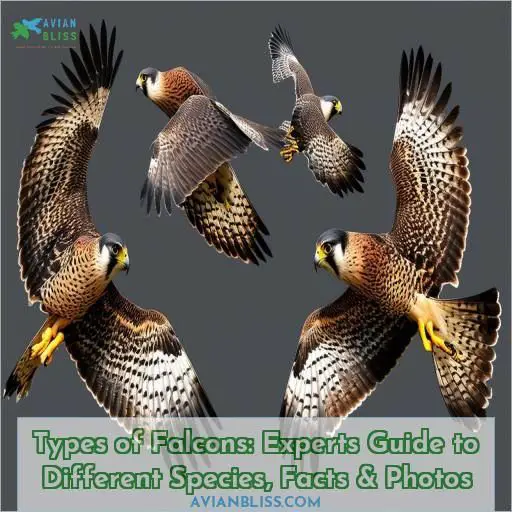
These birds of prey can be found anywhere on Earth except Antarctica, thriving in diverse habitats from deserts to forest edges. Known for their keen eyesight, incredible speeds, and precision hunting techniques, falcons prey on a variety of animals such as small birds and rodents.
The peregrine falcon, for instance, can dive up to 240 mph, making it one of the fastest creatures on the planet. Stick around to discover even more amazing facts!
Table Of Contents
- Key Takeaways
- Falcon Classification
- Physical Characteristics
- Habitat and Distribution
- Diet and Hunting Behavior
- Breeding and Nesting
- Types of Falcons
- Kestrels
- Hobbies
- Peregrine Falcons
- Hierofalcons
- Frequently Asked Questions (FAQs)
- What is the most common type of falcon?
- How many falcon species are there?
- What is the best type of falcon?
- Are falcons a type of hawk?
- How often do falcons migrate annually?
- What threats do falcons face in the wild?
- Are falcons considered endangered species?
- How do falcons communicate with each other?
- What research is being conducted on falcons?
- Conclusion
Key Takeaways
- Buckle up for a wild ride as we dive into the world of falcons, with over 60 species soaring through the skies like feathered daredevils!
- From the pint-sized American Kestrel to the mighty Gyrfalcon, each falcon species has its own unique style, like a runway model strutting its stuff.
- These aerial predators are like nature’s fighter jets, with lightning-fast dives and precision hunting skills that would make even a seasoned pilot jealous.
- But like all superheroes, falcons face their own challenges, from habitat loss to climate change. Let’s spread the word and help these magnificent birds soar for generations to come!
Falcon Classification
Falcon classification is an enthralling domain where you’ll unravel the diverse tapestry of these remarkable raptors.
Picture soaring through the skies, witnessing the grandeur of over 60 extant falcon species across 11 genera.
From the terrestrial caracaras to the elusive forest falcons, each group holds its own unique allure.
Prepare to embark on a thrilling odyssey, exploring the intricate taxonomy that distinguishes the common kestrels from the formidable hierofalcons.
Uncover their conservation status, banding programs, and the artistry of training these winged predators.
This intricate world of falcon classification invites you to embrace the freedom and mastery of these aerial predators.
Physical Characteristics
Falcons exhibit a wide range of sizes, from the diminutive American Kestrel at around 8-12 inches and just 2.8-5.8 ounces up to the massive Gyrfalcon at 20-25 inches and 2-4.5 pounds.
Their plumage and color varies greatly as well. Species like the Peregrine Falcon sport a sleek gray-black topside, contrasted by the rich reddish-brown tones of hierofalcons such as the Saker.
Their hooked beaks and powerfully taloned feet, however, are unmistakable adaptations for tearing into prey.
Size and Weight
You’ll marvel at the range of falcon sizes – from the tiny American kestrel at just 9 inches, to the mighty gyrfalcon reaching over 2 feet! Peregrine falcons weigh roughly 2-4 lbs with a stunning 3-4 foot wingspan. Size impacts their aerial agility, prey selection, and nest preferences. Larger falcons dominate open terrain while smaller falcons thrive in dense habitats.
Plumage and Coloration
You’ll find falcons sport an array of colors like brown, yellow, white, gray, and black. Their feather patterns offer camouflage and species identification. Some boast bold markings for territorial displays. Observe their stunning plumage and you’ll see nature’s artistry – from the peregrine’s slate upperparts to the kestrel’s rusty back and tail.
Beak and Talons
Those powerful, hooked beaks and razor-sharp talons aren’t just for show – they’re the keys to a falcon’s hunting prowess.
The beak shape varies between species, from the notched tomial tooth ideal for ripping prey to the sturdy, curved design perfect for tearing flesh.
And with grip strengths that’ll make your knuckles whiten, those talon tips slice effortlessly through feather and fur.
The falcon’s very existence revolves around those lethal tools, honed for an unmatched hunting style.
Habitat and Distribution
Falcons are widely distributed across the globe, found on every continent except Antarctica. Their habitats range from hot deserts and grasslands to dense forests, arctic tundra, and coastal areas near bodies of water.
Geographical Range
You’ll find falcons worldwide, but their migration patterns and nesting sites vary. They inhabit:
- Deserts and grasslands across North America
- Forests and tundra regions of Europe and Asia
- Coastal areas and open woodlands in Africa
- Islands, savannas, and even urban centers in Australia
Monitoring their habitat preferences and conservation status is key to sustaining healthy falcon populations globally.
Preferred Habitats
You’ll find falcons thriving in open areas like grasslands, deserts, and around bodies of water – anywhere that allows for unobstructed aerial maneuvers and hunting. As remarkable birds of prey, their thin, tapered wings make them masters of the sky. However, habitat loss poses a threat, driving conservation efforts to protect these powerful symbols of freedom.
Diet and Hunting Behavior
Falcons are highly skilled avian predators that hunt a diverse array of prey species, ranging from small songbirds and rodents to larger waterfowl and even fish. Their hunting techniques vary between species, but most falcons employ a combination of powerful eyesight, aerobatic maneuvers, and rapid dives to ambush or pursue their quarry from the air.
Prey Species
Falcons are opportunistic hunters, with prey size and preference varying by species. Their diet includes:
- Small birds: songbirds, shorebirds, waterfowl
- Small mammals: rodents, rabbits, squirrels
- Reptiles: lizards, snakes
They target abundant prey species based on habitat and prey behavior. As birds of prey, falcons hunt insects, small birds, and reptiles with precision.
Hunting Techniques
With lightning speed and aerial acrobatics, falcons are aerial hunting masters. Their razor-sharp talons and beaks tear into prey, while their acute vision locks onto targets from unimaginable heights. Witness a falcon effortlessly pursue and dispatch its quarry:
| Skill | Description |
|---|---|
| Speed | Up to 240 mph during dives |
| Agility | Tight turns and precise maneuvers |
| Precision | Pinpoint accuracy from incredible heights |
| Eyesight | 8x better vision than humans |
| Teamwork | Social hunting for larger prey |
You’ll be awestruck by nature’s fiercest aerial predators.
Breeding and Nesting
To understand falcon breeding and nesting behaviors, we must first examine their courtship and mating rituals. These aerial masters often engage in spectacular flight displays, with the male performing acrobatic maneuvers and passing prey to the female as part of their courtship.
Courtship and Mating
During courtship, falcons engage in elaborate aerial displays to impress potential mates. Dive-bombing, sky dancing, and vocal calls are common tactics by males to establish territory and woo females. Once a pair forms, mating occurs shortly after with the male transferring his sperm to the female through a "cloacal kiss." After fertilization, nesting preparations begin.
Nest Construction
When building their nests, falcons carefully select prime nesting habitat – open areas with abundant prey and minimal disturbance. They construct cup-shaped nests using twigs, sticks, and vegetation, varying in size and shape based on the falcon species. From kestrels’ compact grass nests to peregrine falcons’ expansive cliff-side structures, their nesting prowess reflects their mastery as diurnal birds of prey.
Incubation and Chick Development
After the female lays her eggs, both parents take turns incubating the clutch, which can range from 1-6 eggs depending on the species. The incubation period lasts around 28-35 days, and once hatched, the chick growth is rapid:
- Chicks are born semi-altricial, with downy feathers
- Nestling period averages 35-42 days before fledging
- Parents feed chicks regurgitated food for several weeks
Types of Falcons
There are over 60 species of falcons, divided into 11 genera. Let’s explore some key falcon groups:
| Group | Description |
|---|---|
| Caracaras | Terrestrial birds found in the Americas, often walking on the ground. |
| Forest Falcons | Small falcons that hunt in dense forest habitats. |
| Falco | Largest genus with over 40 species like the iconic Peregrine Falcon. |
Falcons display incredible diversity, from tiny kestrels to massive hierofalcons. They’ve adapted to thrive in diverse environments using specialized traits like the tomial tooth for killing prey. Falcons hold symbolic importance in many cultures, prized for their power and freedom. With skills like diving over 200 mph, these raptors showcase nature’s remarkable engineering.
Kestrels
Kestrels are a distinctive group of small falcons known for their ability to hover while hunting and their striking plumage. Among the most widely recognized species are the American Kestrel with its rusty-red back and tail, the Common Kestrel found across Europe and Asia, and the diminutive Lesser Kestrel that breeds in the Mediterranean region.
American Kestrel
The American Kestrel is a remarkable falcon found across the Americas. Here are 3 fascinating facts about this raptor:
- They exhibit sexual dimorphism, with males boasting striking rusty-red plumage.
- Urban adapters, they’ve learned to nest in man-made structures like nest boxes.
- Conservation efforts aim to protect their declining populations due to pesticide use.
Observing these charismatic birds hover-hunting for insects and small mammals over open fields is a treat for any nature enthusiast.
Common Kestrel
You’re in for a treat with the Common Kestrel! This dashing raptor graces Eurasia and Africa, hovering effortlessly while hunting. Its rusty-red back, slate-blue head, and black moustache adorn a compact 12-inch frame. Marvel at its aerial acrobatics as it plucks voles and insects mid-flight. Widespread yet declining, conservation efforts safeguard this falcon’s populations worldwide.
Lesser Kestrel
Lesser Kestrels are pint-sized powerhouses! You might’ve encountered these rusty-backed marvels migrating across Europe or in their original turf spanning Africa to Central Asia. They’ve got razor talons for snatching insects, lizards, and rodents mid-air. But habitat destruction‘s left their global numbers dwindling. Luckily, efforts are underway to safeguard these feisty falcons by protecting their breeding grounds.
Hobbies
Hobbies are a group of medium-sized falcons characterized by their remarkable aerial agility and ability to perform incredible maneuvers while hunting prey. Three notable species in this group are the Eurasian Hobby found across Europe and Asia, the Australian Hobby native to Australia and surrounding islands, and the Oriental Hobby residing in parts of Asia.
Eurasian Hobby
You’re about to meet the Eurasian Hobby, a sleek and agile falcon native to Europe, Asia, and Africa. This fierce hunter boasts:
- Slate-gray upperparts and striking black moustache
- Rapid, twisting flight for capturing birds mid-air
- Long migration routes from breeding to wintering grounds
- Declining numbers due to pesticide use and habitat loss
Despite challenges, falconers cherish training these aerial acrobats, preserving their ancient hunting legacy.
Australian Hobby
Envision the Australian Hobby, sleek and swift, soaring across the vast Outback. Its distinctive black eye-stripe and brilliant rufous thighs make it unmistakable. This fierce hunter was once persecuted but today, thanks to conservation efforts, it thrives in Australia’s woodlands and grasslands, deftly capturing prey with breathtaking aerial maneuvers.
Oriental Hobby
You’ll find the Oriental Hobby across parts of Asia. This fierce falcon hunts birds, insects, and small mammals with agile aerial maneuvers. It plucks prey mid-flight using its notched beak and sharp talons. Nesting in tree cavities, the Oriental Hobby lays 3-4 eggs yearly. With its distinctive black facial markings, it’s a sight to behold.
Peregrine Falcons
Let’s explore the peregrine falcon, one of the world’s most impressive avian predators. With a top speed exceeding 200 mph during hunting dives, known as stoops, this powerful raptor dominates the skies and embodies the essence of falconry at its finest.
Peregrine Falcon
The Peregrine Falcon, renowned for its extraordinary speed and agility, holds a significant place in cultural symbolism and falconry practices (Source). Historically revered as a hunting bird, its conservation status has stabilized to "Least Concern". This species exemplifies the crucial balance between technological prowess in hunting and the reverence for nature’s elegance .
Prairie Falcon
The Prairie Falcon, a fierce hunter of the open spaces, soars with effortless grace across vast expanses. Its powerful wings and keen eyes are perfectly adapted for pursuing swift prey. You’ll find these impressive raptors perched on rocky outcrops, ever-vigilant for ground squirrels or birds. Sadly, habitat loss threatens their way of life, making conservation efforts essential.
Merlin Falcon
Though smaller than the peregrine, the merlin falcon still packs a fierce punch. These compact raptors migrate vast distances, their pointed wings deftly traversing thermals. Train one for falconry, and you’ll witness their hunting prowess firsthand – stoops so swift they’d leave your heart racing! Yet overhunting once depleted their numbers, underscoring our role as stewards.
Hierofalcons
Hierofalcons are the largest and most powerful falcons, characterized by their reddish or brownish hues. The two main species in this group are the Saker Falcon and the Gyrfalcon, both known for their exceptional hunting skills and impressive size.
Saker Falcon
The Saker Falcon is a powerful bird of prey, with:
- Striking brown and white plumage
- Broad wings for agile hunting
- A strong, hooked beak
These migratory raptors breed across Eurasia, employing spectacular hunting techniques like the stoop—diving at breakneck speeds to strike prey. Though facing threats, conservation efforts aim to preserve their awe-inspiring presence.
Gyrfalcon
The gyrfalcon, the largest falcon species, will mesmerize you with its raw power. Imagine working with these Arctic masters during migration seasons to conserve their populations. Training a gyrfalcon requires dedication, but the rewards are immense – an unbreakable bond with nature’s ultimate aerial predator, steeped in symbolism and falconry tradition.
Frequently Asked Questions (FAQs)
What is the most common type of falcon?
With unmatched speed, the peregrine falcon reigns supreme as the most common type of falcon. Found on every continent except Antarctica and the high Arctic, its adaptability and prowess make it a master of diverse landscapes .
How many falcon species are there?
There are 60 species of falcons worldwide, divided into 11 genera, with the genus Falco being the largest. These birds of prey are known for their speed, agility, and exceptional hunting skills (Source).
What is the best type of falcon?
The best falcon for many is the Peregrine Falcon, renowned for its unmatched speed and hunting prowess, reaching speeds of up to 240 mph. Its powerful, agile flight embodies a spirit of freedom and mastery.
Are falcons a type of hawk?
Falcons aren’t a type of hawk; they belong to the family Falconidae, while hawks are in the family Accipitridae. Falcons are known for their speed and agility, whereas hawks are often more robust and varied in flight styles.
How often do falcons migrate annually?
Falcons migrate annually, usually once a year. Their migration patterns can vary, some traveling thousands of miles to different continents, adapting to the seasonal availability of food and suitable breeding habitats .
What threats do falcons face in the wild?
Falcons navigate a perilous world, facing threats like habitat destruction, pesticide poisoning, and collisions with human structures. These predators’ resilience is continually tested by environmental changes and human encroachment (Source).
Are falcons considered endangered species?
Peregrine Falcons, though not currently endangered, once faced severe threats that led to endangered status in the past. Some falcon species, particularly the Mauritius Kestrel and others, are still considered endangered or at risk .
How do falcons communicate with each other?
Falcons communicate through a fascinating mix of vocalizations, visual displays, body language, and gestures. They use calls to signal alarms or attract mates, while their body movements convey emotions and intentions, ensuring effective interaction within their environment .
What research is being conducted on falcons?
Researchers are investigating falcons’ hunting techniques, genetic diversity, and habitat adaptations, alongside conservation efforts, to understand behavioral patterns and support species preservation .
Conclusion
They say, "The early bird catches the worm," and now you’re equipped to spot and appreciate the incredible diversity among the different types of falcons.
From the swift peregrine falcon and versatile kestrels to the noble hierofalcons, each species showcases unique traits and adaptations.
With detailed knowledge of their classification, habitats, diet, and breeding behaviors, your understanding of these remarkable birds of prey should enrich your wildlife observations and deepen your appreciation of nature’s aerial hunters.
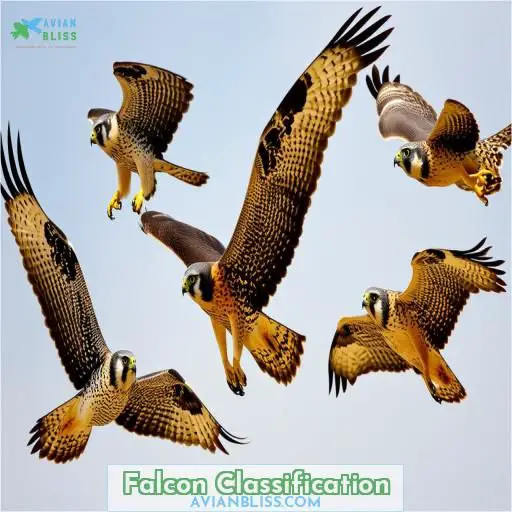
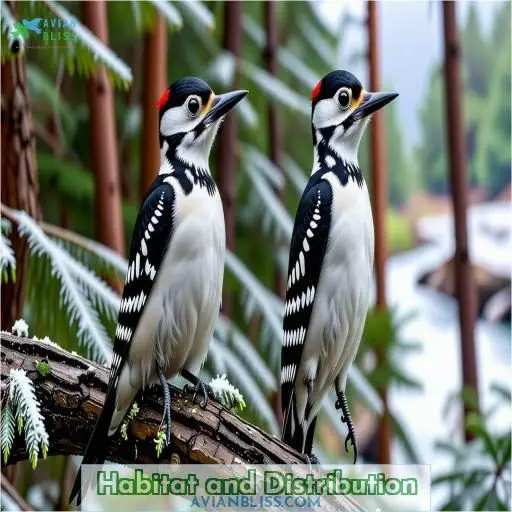

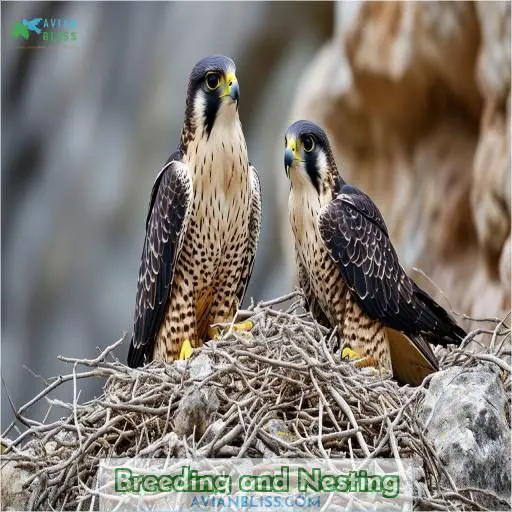
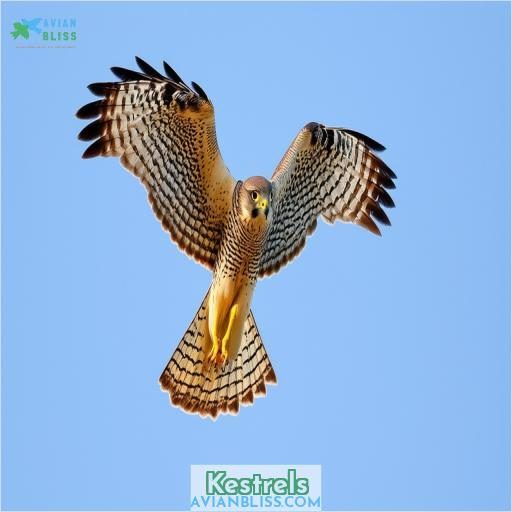
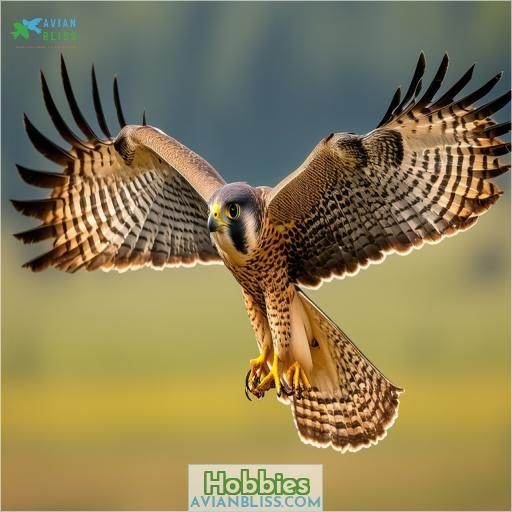
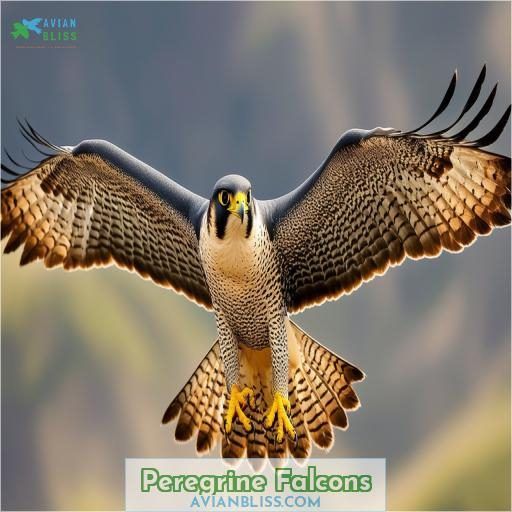
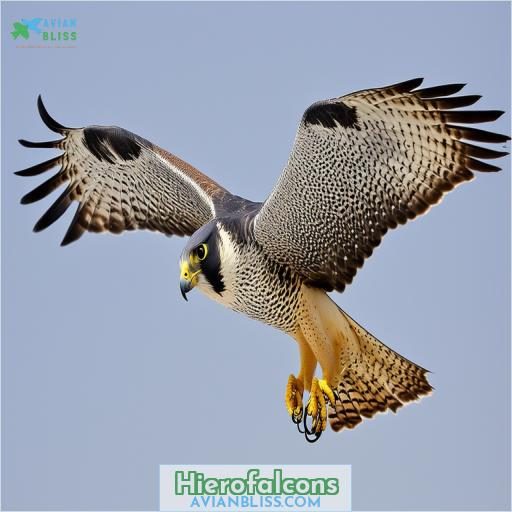
0 Comments